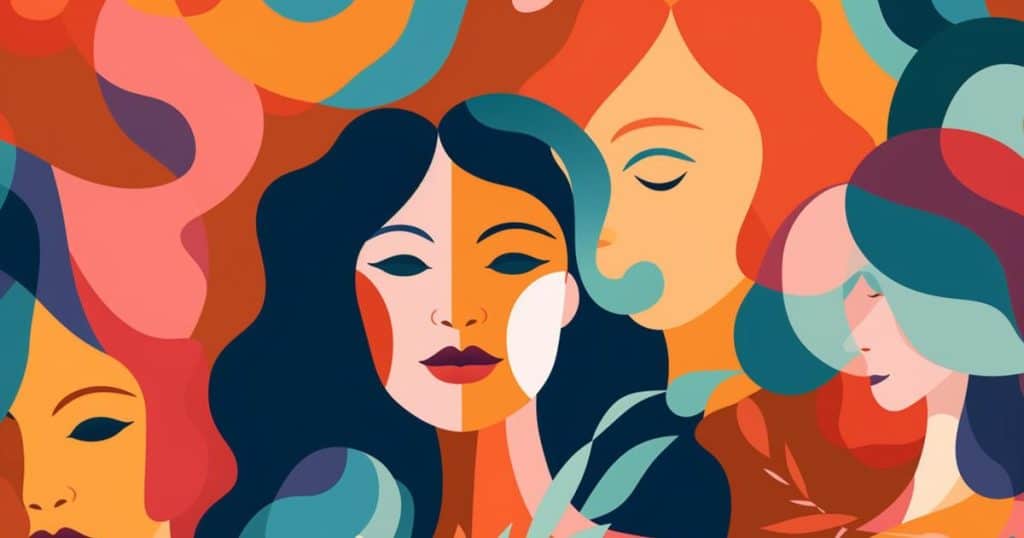Like many of you, I have found myself trapped in the web of a narcissistic family. Here, every twist and turn seems to revolve around the ego of one or more family members.
And within these challenging dynamics, the concept of scapegoating takes on a particularly toxic form.
It’s the blame game, an intricate dance of projection and self-preservation that leaves one individual, often the scapegoat, bearing the weight of the narcissist’s insecurities.
The scapegoat theory offers important insights into this disturbing family dynamic, helping us understand the profound impact it has on those caught in its grip.
Let’s take a closer look into this complex, and often painful, human tendency and its specific relevance within narcissistic families.
- The Scapegoat Theory explains how people project their frustrations onto convenient targets, often blaming innocent individuals or groups to avoid confronting their own insecurities.
- Scapegoating has deep historical roots and understanding this theory is essential for recognizing and addressing unhealthy patterns within families.
- Examples of scapegoating in narcissistic families include blaming one sibling for all problems, projecting inadequacy, shifting responsibility, and undermining achievements.
Table of Contents
What Is Scapegoat Theory?
The scapegoat theory is a psychological concept that explains how individuals or groups tend to project their frustrations and anxieties onto a convenient target or “scapegoat.” This concept is closely related to the idea of displacement, where people redirect their negative feelings from one source to another.
Individuals or groups might blame an innocent person, a particular social group, or an external factor for their problems or difficulties.
This provides temporary psychological relief, as it allows them to avoid confronting their true sources of frustration or insecurity.
Growing up in a narcissistic family, I’ve experienced firsthand how the scapegoat theory takes on a painful and pervasive role. My narcissistic mother continually projected her frustrations, insecurities, and negative emotions onto me to avoid self-confrontation, and I was left to carry the emotional burden.
Origins of the Scapegoat Theory
The concept of scapegoating has ancient origins and can be traced back to religious and cultural practices in different civilizations. One of the most well-known origins is found in the Bible, specifically in the Book of Leviticus.
There, the definition of the scapegoat is a sacrificial animal that carries the sins of the people into the wilderness, symbolically taking away their transgressions.
In psychology, the formalization of the “scapegoat mechanism” emerged in the mid-20th century. Psychologist Rene Girard contributed to the development of this theory.
He sought to explain how individuals and groups displace their own frustrations onto others to reduce their own psychological discomfort.
The theory gained prominence in social psychology, helping to understand how societal prejudices stem from people’s tendency to scapegoat for collective problems.
This is somewhat consistent with Sigmund Freud’s notions of displacement or projection as defense mechanisms.
Freud’s theory of displaced aggression suggests that individuals redirect their aggressive impulses onto less threatening targets to avoid confronting the true source of their frustration or anger.
Why Is Scapegoat Theory Important?
Knowing the scapegoat theory psychology definition will help individuals recognize the unhealthy patterns of blame and manipulation at play.
In turn, it can guide efforts to promote empathy, reduce conflicts, and build a more harmonious family dynamic.
Here’s a more detailed look at its importance:
- Recognition of dysfunctional dynamics: Understanding this theory enables individuals to identify and comprehend the damaging patterns of blame, manipulation, and emotional abuse within the family. This paves the way for self-awareness and positive change.
- Empowerment: By recognizing these damaging patterns, you gain the strength and insight needed to liberate yourself from the relentless cycle of narcissistic abuse. This promotes personal growth and the potential for healthier family dynamics.
- Self-awareness: Being self-aware provides individuals with the tools to address their emotional well-being, heal from past wounds, and lay the foundation for healthier relationships.
- Potential for healing: Understanding the scapegoat dynamic offers hope and the opportunity to establish supportive, nurturing, healthier family relationships.
What Are Some of the Examples of the Scapegoat Theory?
In a narcissistic family, the scapegoat theory takes on a particularly destructive role, perpetuating patterns of blame and manipulation.
Here are examples of how this unfolds within such family dynamics:
1. Blaming One Sibling for All Problems
In narcissistic families, one sibling is often designated as the scapegoat, blamed for all family issues. This act provides a smokescreen for the narcissist’s shortcomings and insecurities.
I’ve experienced the same within my family. Growing up, I was often singled out as the one who didn’t conform to my mother’s expectations.
This meant I was consistently treated poorly for illegitimate reasons, and my non-conformity was often attributed to any issues or conflicts within the family.
I learned to cope with this role by building a strong support system outside the family, which helped me maintain my authenticity and self-confidence.
The scapegoat role, in my case, allowed me to develop resilience and a strong sense of self, as I wasn’t swayed easily by external pressures or judgments.

2. Projecting Inadequacy
Here’s another example of scapegoat theory where the narcissistic parent constantly projects their feelings of inadequacy onto the scapegoat.
I can relate to this on a personal level, as this was a common theme in my family. For a long time, I allowed my mother to criticize my every move and undermine my self-esteem.
And since I didn’t meet her standards of physical appearance, I was made to feel responsible for her dissatisfaction.
Over time, I realized that her projections of inadequacy were more about her own insecurities than anything to do with me.

3. Shifting Responsibility
Scapegoating allows the narcissistic family to shift responsibility away from the narcissist and onto the designated scapegoat, maintaining the narcissist’s self-image.
For example, by making me the designated scapegoat, my mother was able to maintain her self-image as a perfect parent.
Any issues or disappointments within the family were conveniently attributed to my supposed failure to meet her expectations.
This allowed her to avoid taking responsibility for her own unrealistic beliefs and the impact they had on our family dynamics.
Recognizing that I was being unfairly burdened with responsibility for issues that were not my fault was an important step in breaking free from this dynamic.
I learned to distance myself from this role and assert my own identity.

4. Undermining Achievements
Scapegoats often find their accomplishments belittled or dismissed within the family.
As the designated scapegoat myself, my mother’s unrealistic values and beliefs led to a consistent pattern of belittling and dismissing my accomplishments.
She seemed to downplay any successes or achievements I had, especially if they didn’t align with her narrow definition of success and beauty.
It felt as though no matter what I accomplished, it was never good enough in her eyes. Even when I had valid achievements and successes to be proud of, I felt like a failure.

5. Distorted Family Roles
The scapegoat becomes the family’s emotional punching bag, while the narcissist often assumes the role of perpetual victim or martyr.
My narcissistic mother made me the target of her negative feelings while she portrayed herself as the innocent victim.
It took me some time to recognize that her portrayal of herself as a martyr was a coping mechanism that allowed her to avoid taking responsibility for her own actions and beliefs.

6. Isolating the Scapegoat
The family may isolate the scapegoat, making them feel like an outsider or the black sheep to further enforce their role as the problem.
Growing up, I was frequently made to feel like an outcast. My siblings and mother had a closer relationship, as they adhered more closely to her standards and values.
This isolation was challenging to cope with, as it created feelings of alienation and loneliness. However, it was also a driving force for me to seek out a support system outside of the family.

7. Cycle of Guilt and Manipulation
The scapegoat is continually blamed for the issues in the family, even those beyond their control, and manipulated to feel responsible for the family’s dysfunction.
In my life, the constant cycle of guilt and manipulation left me feeling trapped and responsible for issues that were not of my making.
It was challenging, but I had to learn to recognize the manipulation and not internalize the guilt placed on me.
Guilt and manipulation were tools my mother used to maintain her own self-image and avoid taking responsibility for her actions and beliefs.
Recognizing this allowed me to break free from the cycle and begin my journey toward healing and personal growth.

What Is Scapegoating?
Scapegoating is the act of unfairly blaming a person or group for one’s own problems. It can also serve as a way for the group or individuals involved to displace their own anxieties, insecurities, or negative emotions onto the scapegoat.
What is a scapegoat in psychology? In psychology, the word scapegoat refers to an individual or group unfairly blamed for problems or conflicts to maintain their self-image.
While scapegoating is the actual practice or act of blaming a specific person or group for negative outcomes, the scapegoat theory explains why it happens and how it works.
4 Types of Scapegoating
Scapegoating is a complex social phenomenon that can take various forms, often involving different combinations of individuals and groups.
Scapegoating serves as a way for perpetrators to avoid personal responsibility. It has four primary types, which are one-on-one, one-on-group, group-on-one, and group-on-group.
1. One-on-One Scapegoating
Here, an individual unfairly singles out another individual as the target of blame.
This type of scapegoating often involves a power dynamic, where a person uses their authority or influence to place blame on less powerful ones.
It can occur in various settings, such as workplaces, families, or personal relationships, and may result in emotional harm and power imbalances.
It can refer to one’s tendency to attribute one’s own unacceptable feelings or anxieties to another’s minor misbehavior.
For instance, if someone is having a bad day or had a fight with her boyfriend, she might unfairly blame her friend for a trivial mistake.
2. One-on-Group Scapegoating
One person unfairly blames an entire group for issues or conflicts. This form can lead to discrimination, stereotypes, and prejudice against the targeted group.
It is commonly seen in cases of discrimination, racism, or xenophobia, where an individual projects their grievances onto a scapegoated group, creating an “us versus them” mentality.
Perhaps the most blatant and tragic example of scapegoating against a particular group happened when Adolf Hitler notoriously scapegoated Jews and other groups during his rise to power in Nazi Germany.
He falsely portrayed them as responsible for the country’s economic struggles, even though many Jews were more commercially successful than the average German.
This manipulation conjured resentment and hatred toward these minority groups.
3. Group-on-One Scapegoating
In this scenario, a group collectively blames a single individual for their problems. The group may use its collective power and influence to ostracize or mistreat the scapegoat.
Group-on-one scapegoating often occurs in bullying situations, where a targeted individual is subjected to peer pressure, exclusion, or harassment.
For example, a sports team may blame an individual player for their poor performance, causing intergroup conflict within the team.
4. Group-on-Group Scapegoating
This is the most complex form of scapegoating, where one group unfairly blames another group for issues or conflicts, even when they don’t pose a real threat to anyone.
It can lead to intergroup tensions, conflicts, and even violence.
Group-on-group scapegoating is a common factor in various forms of discrimination, cultural conflicts, and social divisions.
In the context of group-on-group scapegoating, extreme levels of nationalism can lead to assigning blame and fostering prejudice toward a specific ethnic or cultural group.
For example, during times of economic hardship or when there are increasingly scarce jobs, one group might scapegoat another.
This can lead to increased prejudice and hostility that they hold toward unacceptable targets.
Related Posts:
- Why Am I Always the Scapegoat in My Family? And How I Got Out?
- Scapegoat of the Family: I Didn’t Allow Myself to Be a Victim and You Shouldn’t Either
- The Tragedy of a Narcissist Family Scapegoat: My Personal Experience and How I Overcame It
- Family Scapegoating Abuse: Nothing Is Permanent, I Survived and Thrived, so Can You!
- Family Scapegoat Estrangement: How I Deal With the Aftermath?
Frequently Asked Questions
What is the scapegoat theory of discrimination?
The scapegoat theory suggests that people experience unfair treatment and blame from others when those individuals seek to displace their own negative emotions, frustrations, or fears.
Why does scapegoat theory happen?
The scapegoat theory occurs as a psychological defense mechanism. This displacement of blame helps maintain the perpetrators’ self-esteem, as they attribute problems to the scapegoat, providing a false sense of relief from their own grievances.
Who created the scapegoat theory?
The scapegoat theory of discrimination was first introduced by Marilynn Brewer and Norman Miller in their 1984 research, “Beyond the Contact Hypothesis.”
What is scapegoat theory in sociology?
In sociology, the scapegoat theory is a concept that explains the phenomenon of prejudice and discrimination that people experience. It suggests that an individual or a particular group facing frustration or challenges often redirects their negative emotions toward a less powerful or marginalized group.
How might the scapegoat theory be used to explain bullying?
The scapegoat theory relates to bullying because bullies target individuals they perceive as different or weaker to vent their own frustrations. Bullies use them as an outlet for their frustrations instead of addressing the true cause of their negative emotions.


